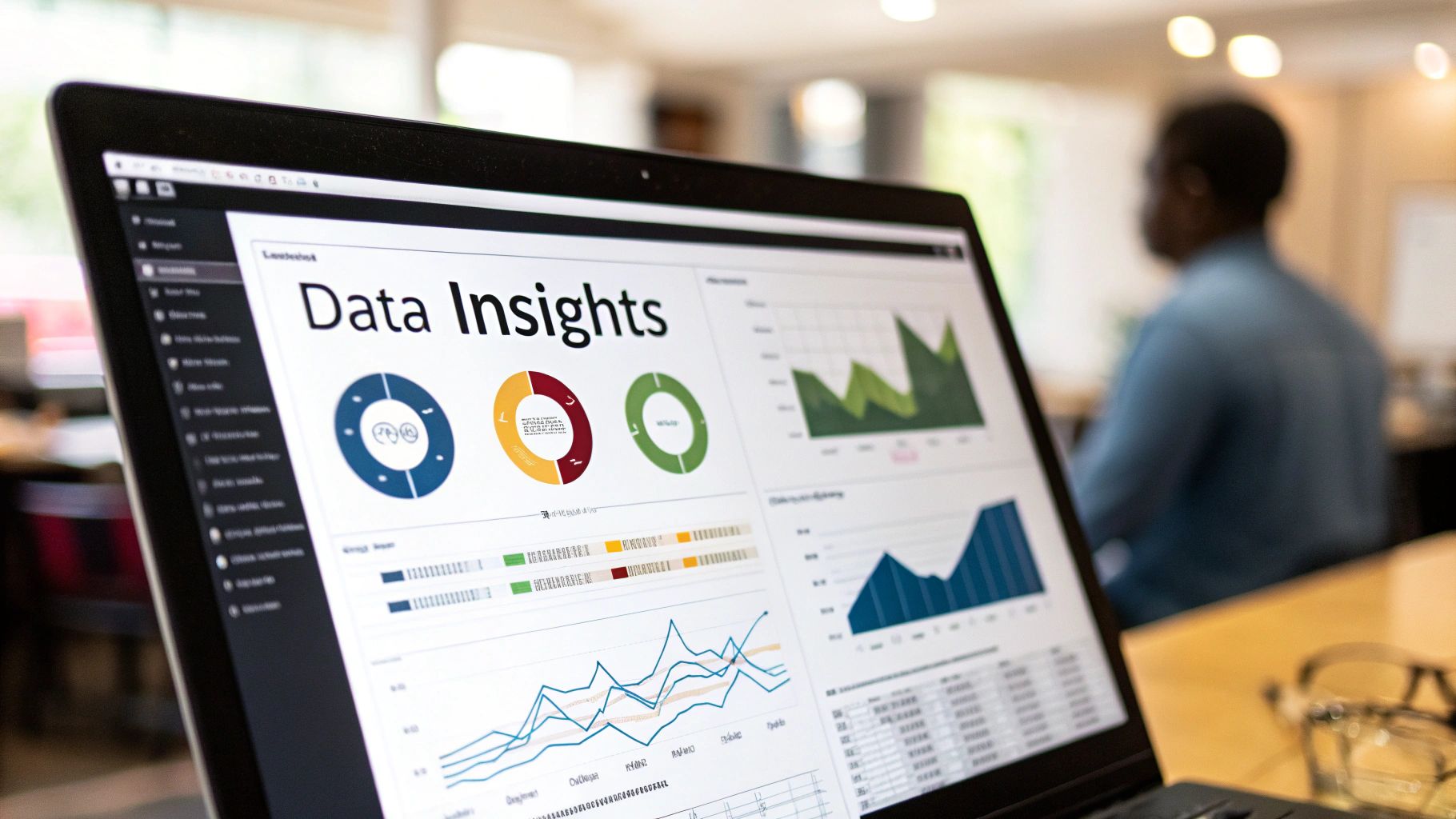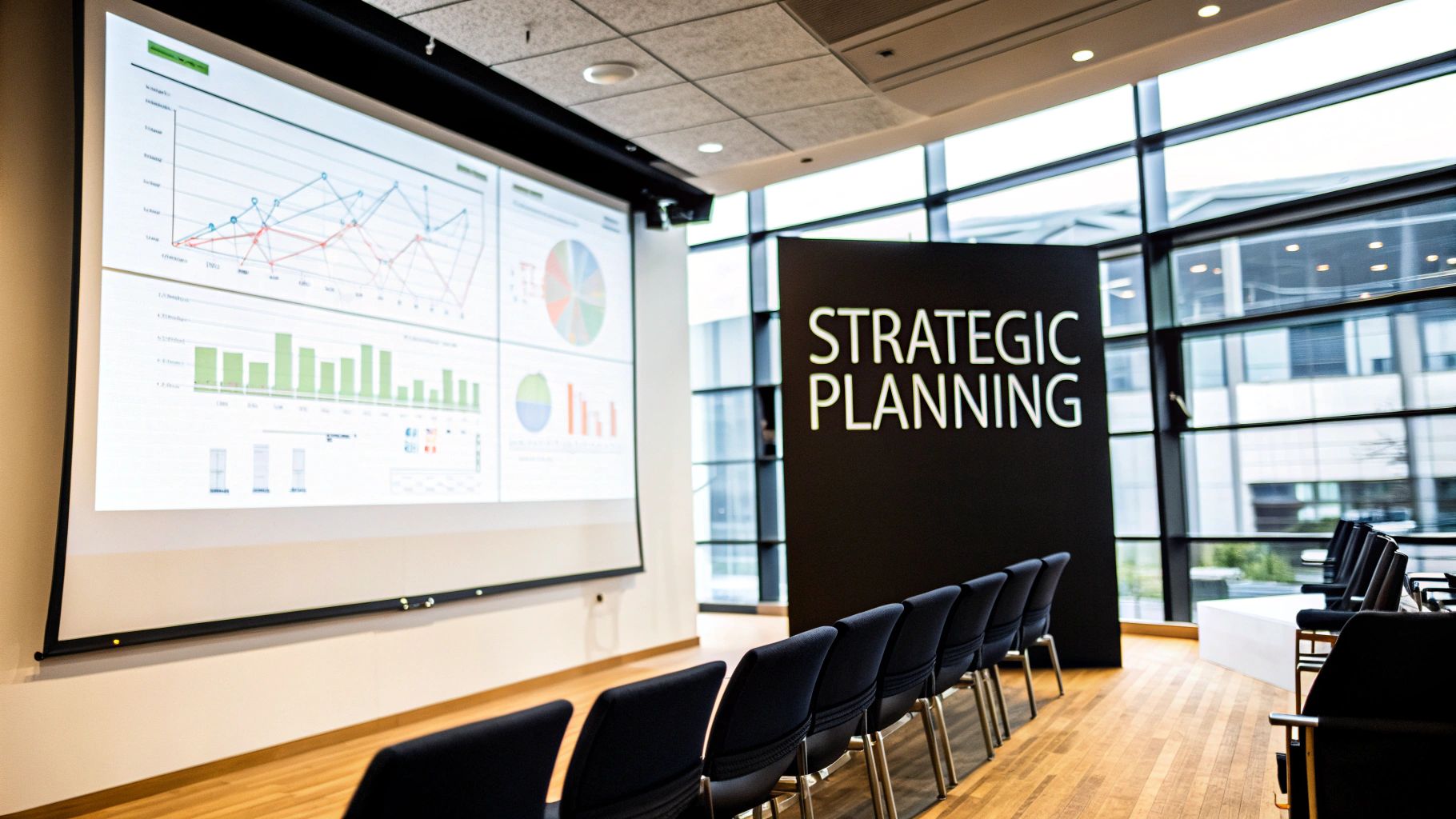Understanding the Modern B2B Lead Generation Landscape
B2B lead generation has fundamentally changed in recent years. The buyer's journey involves extensive research and comparison before any purchase decisions are made. Gone are the days of basic outreach – today's success requires deep understanding of how modern B2B buyers make decisions.
The Evolution of Buying Committees
Buying committees have become increasingly complex, with multiple stakeholders involved in each purchase decision. These committees include people from different departments, each bringing their own priorities and concerns to the table. The process isn't straightforward anymore – decision makers may jump in and out at different stages, requiring marketers to provide relevant information throughout the entire journey.
The Rise of Digital Content
High-quality digital content now drives most of the B2B buying process. Buyers extensively research through blog posts, white papers, case studies and reviews before engaging with vendors. This has major implications for lead generation costs and strategies. On average, B2B leads cost between $31 and $60, though this varies by industry. Technology companies typically pay around $30 per lead, while healthcare leads can cost up to $60. Despite these expenses, lead generation remains critical – 85% of marketers plan to focus on generating more leads in 2024. However, 61% still struggle with lead quality. For more details, check out these lead generation statistics.
Setting Realistic Budgets and Measuring ROI
Success in modern B2B lead generation requires careful planning and measurement. Setting realistic budgets based on industry standards and business goals is essential. Understanding your cost per acquisition (CPA) across channels helps optimize spending. But lead volume alone isn't enough – the focus must be on attracting high-quality leads and nurturing them effectively through the sales process.
Building Scalable Lead Generation Programs
Creating sustainable B2B lead generation programs requires efficient systems and continuous optimization. This means implementing proper tracking, using the right tools, and regularly analyzing data to improve results. Companies that understand today's B2B landscape and adapt their approach accordingly are best positioned to attract and convert valuable leads into long-term customers.
Creating Content That Converts Decision Makers
The core of B2B lead generation comes down to content that speaks directly to decision-makers. Creating compelling content means deeply understanding what drives your audience and addressing their specific challenges through thoughtful, informative content.
Understanding the Decision-Maker's Journey
B2B buyers today do extensive homework before making purchase decisions. They research solutions, compare options, and involve multiple stakeholders. To effectively reach them, you need content that meets them at each stage:
- Awareness Stage: Educational blog posts and white papers help identify key challenges
- Consideration Stage: Case studies and product comparisons guide evaluation
- Decision Stage: Free trials, demos and consultations support final choices
Content Frameworks That Drive Results
Two proven frameworks help structure content for maximum impact. The "Problem-Agitation-Solution" (PAS) model first highlights a key challenge, explores its negative effects, then presents your solution as the answer. The "Star-Chain-Hook" approach starts with an engaging story, connects it to a relevant problem, and closes with a clear call to action.
The numbers show content's vital role in B2B marketing. Research indicates that 91% of B2B marketers find content marketing outperforms traditional channels for lead generation. 62% of B2B buyers make vendor selections based on digital content alone. Live events and webinars also prove effective, with 32% of marketers successfully using them to generate leads. See more statistics here.
Optimizing Content for Maximum Impact
Great content needs optimization to deliver results. Key areas to focus on include:
- SEO Best Practices: Use relevant keywords naturally to improve search visibility
- Clear Next Steps: Guide readers with focused calls-to-action
- Multi-Channel Promotion: Share across social media, email and industry sites
- Data-Driven Refinement: Track performance metrics and adjust accordingly
Content Types for High Engagement
Different formats work best at different buying stages. Here are proven content types for B2B lead generation:
| Content Type | Benefits | Example |
|---|---|---|
| Blog Posts | Build thought leadership, drive organic traffic | Industry insights, best practices |
| White Papers | Provide in-depth analysis, demonstrate expertise | Research reports, technical guides |
| Case Studies | Showcase successful client stories, build credibility | Client testimonials, quantifiable results |
| Webinars | Engage with prospects in real-time, generate qualified leads | Product demos, expert panels |
| Email Newsletters | Nurture leads, share valuable content, promote offers | Product updates, industry news |
Focus on creating high-quality content that addresses your audience's needs while optimizing for discovery and engagement. This combination will help you effectively reach and convert B2B decision-makers.
How To Turn Your Email Marketing Into A Lead Generation Machine
Email marketing continues to be one of the most effective B2B lead generation tools. But simply blasting out mass emails no longer cuts it. Let's explore proven strategies to make your email outreach more targeted, personal, and successful at bringing in quality leads.
Smart Segmentation For Better Results
The key to effective email marketing starts with smart segmentation. Go beyond basic industry or company size groupings. Think about dividing your audience based on:
- Past interactions with your emails and website
- Content downloads and resource usage
- Specific pain points and challenges
- Stage in the buying journey
This focused approach helps you speak directly to each group's needs, leading to higher open rates and click-throughs. When you address real problems, you become a trusted resource rather than just another vendor.
Automated Nurture Sequences That Work
Once you've grouped your audience, create email sequences that guide leads through your sales process. Each sequence should provide valuable content, share relevant resources, and naturally introduce your solution. For example, start with a helpful guide, follow up with success stories, then invite them to learn more.
These automated sequences keep your leads engaged even when your team is busy with other priorities. Think of it like having a dedicated sales assistant working around the clock to move prospects closer to becoming customers.
Writing Emails That People Want To Read
Even with perfect targeting and automation, your emails need compelling content. Focus on telling stories that connect with your readers. Share real customer successes, tackle common industry problems, and provide practical tips they can use right away.
By leading with value in every message, you build credibility as an industry expert. This makes your audience more receptive when you do share promotional content. The numbers back this up – email marketing generates an average $44 return for every $1 spent. And targeted nurture emails get 4-10x higher response rates than standalone messages. See more email marketing data here.
Using Behavior Triggers To Drive Engagement
Take your email strategy further by setting up behavior-based triggers. These automatically send targeted messages based on specific actions. For instance:
- Send related content when someone downloads a resource
- Follow up with abandoned cart reminders
- Provide next steps after webinar attendance
This responsive approach shows you understand each lead's interests and helps them move forward in their journey. The personal touch significantly boosts engagement and conversions. EmailAddress.ai can help ensure your emails reach the right inboxes for maximum impact.
Building Landing Pages That Actually Convert
A high-converting landing page is essential for successful B2B lead generation. These pages connect your marketing efforts to real leads. The key is going beyond basic tips to create pages that truly connect with B2B buyers.
Crafting Compelling Value Propositions
Your value proposition needs to instantly show visitors why they should share their contact info. Skip the feature lists – focus on explaining how you solve their specific problems. For example, replace "Advanced reporting features" with "Get data insights that boost sales by 20%." This speaks directly to what they want to achieve.
Using Psychology to Drive Action
Smart use of psychology can boost conversions naturally. Add testimonials from happy clients to build trust through social proof. Create urgency with time-limited offers. Display awards and certifications to establish credibility. These small additions often lead to big gains in conversion rates.
Personalizing for Different Audiences
One-size-fits-all landing pages rarely perform well. Research shows that 68% of B2B companies now use personalized landing pages for their paid marketing campaigns. Learn more about this trend in these lead generation statistics. Create different versions for various industries, company sizes, and job roles. Each version should address specific challenges and offer relevant solutions.
Testing and Improving Constantly
Landing page optimization requires ongoing testing. Use A/B tests to try different headlines, calls-to-action, form fields, and layouts. Track the data to see what works best with your audience. Keep testing and refining to steadily improve conversion rates over time.
Getting Quality Leads, Not Just More Leads
While high conversion rates matter, getting the right leads matters more. Focus on attracting visitors who match your ideal customer profile (ICP) and are likely to become customers. Build your landing pages to appeal specifically to these ideal prospects. A slightly lower conversion rate is fine if it means higher quality leads that move through your sales process more effectively.
Mastering Social Selling for Lead Generation
Social media has evolved from basic networking to become an essential tool for B2B lead generation. Companies now use platforms like LinkedIn and Twitter to connect with and convert high-value prospects. Let's explore how to build an effective social selling strategy.
Identifying and Engaging Decision-Makers
The key to social selling is precise targeting. Rather than broadcasting general messages, focus on finding specific decision-makers at your target companies. Tools like LinkedIn Sales Navigator help you filter prospects by job title, industry, and company size. Once you identify promising contacts, engage naturally with their posts through likes, comments and shares before making direct contact.
Building Thought Leadership and Attracting Ideal Customers
Success in social selling comes from building relationships, not just promoting products. Share valuable insights that establish you as a trusted expert in your field. Create content that addresses your audience's key challenges – for example, if you sell marketing software, share practical tips about email campaigns and lead nurturing. Being active in relevant LinkedIn and Twitter groups also helps expand your influence.
Developing Engaging Content That Sparks Conversations
Your social content should start meaningful discussions. Focus on content that educates and connects rather than just product promotion. Some effective formats include:
- Short videos with quick tips and insights
- Infographics that present data clearly
- Polls and quizzes to boost engagement
- Behind-the-scenes content to humanize your brand
The goal is building trust and relationships before discussing sales opportunities.
Using Multiple Social Platforms Effectively
While LinkedIn remains essential for B2B social selling, other platforms offer unique opportunities. Twitter works well for industry news and real-time engagement. Newer platforms like Clubhouse and Discord enable more personal connections. Choose platforms based on where your target buyers spend time. EmailAddress.ai can help ensure your follow-up emails reach the right inboxes.
Measuring and Optimizing Social Selling Results
Track key metrics like connection requests, engagement rates, and leads generated. Use this data to understand which approaches work best and refine your strategy. Many social selling platforms include analytics features to streamline measurement. Regular analysis helps you improve your messaging, timing, and conversion rates to generate more qualified leads.
Measuring and Scaling Your B2B Lead Generation Success
After putting B2B lead generation strategies into action, you need to measure what's working and scale those successful approaches. The key is tracking the right metrics and using data to guide your decisions. This helps you understand which tactics connect with your audience and get the most from your investment.
Key Metrics for Tracking Lead Generation Success
To gauge how well your lead generation is performing, focus on these essential metrics:
- Website Traffic: Track visitor numbers and traffic sources to see which channels bring in potential leads
- Conversion Rate: The percentage of visitors who take desired actions like filling out forms. Higher rates show your landing pages are doing their job
- Cost Per Lead (CPL): Calculate how much you spend to acquire each lead across different channels to optimize your budget
- Lead Quality: Evaluate leads based on engagement, demographics and fit with your ideal customer profile
- Sales Conversion Rate: Monitor how many qualified leads become customers – this shows if your overall process works
Building Dashboards That Inform Decisions
Data only helps if you can act on it. Create clear dashboards showing key metrics and trends at a glance. For example, display traffic sources, conversion rates by page, and cost per lead for each channel. This quick overview helps spot areas needing attention.
Implementing Testing Protocols for Continuous Improvement
Regular testing helps you keep improving results. Use A/B testing to compare different versions of landing pages, emails and other materials. Test headlines, calls-to-action, images and page layouts. By tracking which versions perform best, you can make smart choices to boost conversion rates.
Scaling Your Lead Generation While Maintaining Quality
As your lead generation grows, scale thoughtfully to keep lead quality high. Automate repetitive tasks like email marketing and lead nurturing for efficiency. But don't lose the personal touch – tailor messages to different audience segments and build real relationships.
Keep a clean email list by regularly removing invalid addresses. EmailAddress.ai can verify your email list to maintain high deliverability as you scale up. This helps ensure your messages reach the right inboxes.
Ready to boost your email deliverability and lead generation results? Visit EmailAddress.ai for advanced email verification that gets your messages to real inboxes.





